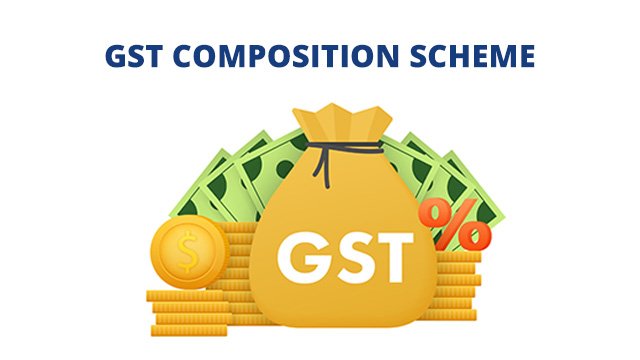
After the introduction of GST, an array of companies registered themselves under the GST Act, and the registration of alternative tax that included composition schemes became available for the benefit of small-scale organizations.
There are a number of key differences between the GST composition scheme and its earlier version, the VAT composition scheme. Currently, businesses with a yearly turnover of Rs. 1.5 crores or less are eligible to fall in the GST composition scheme. In this blog, we will discuss the composition scheme, who is eligible, and how you can apply.
What is the GST Composition Scheme?
Under the GST Act, the composition scheme is a process opted by taxpayers who have a turnover of less than 1.5 crores. Such individuals have to pay a specific rate of GST, resulting in benefiting the small business owners under this scheme.
Furthermore, the search tool for GST makes everything hassle-free to identify whether the organization has opted for the scheme or not. To do such, you have to get GSTIN details and can verify it online.
Characteristics of the GST Composition Scheme
The GST composition scheme has several characteristics that a registered taxpayer must not be aware of. These are as follows:
- •Minimize the tax liability due to the lower rates of composition scheme in comparison to other GST. Basically, the tax significant under the scheme is one percent of the annual turnover.
- • The rate of tax within the composition scheme might differ depending on the type of business a person owns. However, this might vary from one percent to five percent.
- • If you are a registered taxpayer then you need to file one return on a quarterly basis.
- • Taxpayers who are part of the composite must create a bill of supply in place of a tax invoice.
- • If a taxpayer operates more than one company under the same PAN, he or she must either enroll all of those enterprises in the composite scheme or withdraw from the system completely.
- • Specific taxpayers only have access to the composite plan if they've reached a particular income level. Manufacturers, suppliers, and eateries that don't sell or serve alcoholic drinks fall under this category.
- • The regular GST rate applies when the reverse charge method is used for a transaction.
Who Cannot Opt for the Composition Scheme?
The composition scheme has several benefits that are offered to eligible taxpayers, however, it is significant to keep in mind that there is an eligibility criteria for opting for this scheme. Here is a list of individuals who cannot opt for the GST composition scheme.
Manufacturer of Pan Masala, or Tobacco
Tobacco product manufacturers, ice cream makers, and pan masala spice grinders are all excluded from the Composition Scheme. The goal of this exemption is to keep tight control on the taxation of items that might have more far-reaching negative social or health effects.
Business Involved in Inter-State Supplies
Companies that deal in inter-state supplies cannot opt for composition schemes. This was done in order to make sure that their trading in multiple states while complying with standard restrictions.
Casual Taxable Person
Non-residents and those who are not subject to taxation are unable to opt for the Composition Scheme. During their brief stays in a separate state or union territory, these persons must follow the regular GST regulations since they are operating their business.
Note: For all other taxpayers who are eligible for the GST composition scheme, it offers an opportunity to lessen the burden of compiling and making their business operations smooth. It is significant to any business falling under the GST composition scheme in order to assess the eligibility criteria and make a decision on choosing this taxation method.
Forms under the GST Composition Scheme
Here is a list of forms that an individual or business might need to register for the composition scheme-
| Form Number | Purpose |
|---|---|
| CMP 1 | Intimation for payment of tax- For conditionally registered entities |
| CMP 2 | Composition scheme- For unregistered entities |
| CMP 3 | Inward supply received from unregistered entities |
| CMP 4 | Withdrawal from the scheme |
| CMP 5 | Show cause notice for contravention of the GST Act |
| CMP 6 | Reply to the form CMP 5 |
| CMP 7 | Acceptance or rejection form for the form CMP 6 |
| REG 1 | GST Registration for the composition scheme |
| ITC 1 | Input details for the supplies |
How to Apply for the Composition Scheme?
If you are looking to apply for the composition scheme, then let us tell you that it is easy and can be done online. For this, all you need to do is complete the application form, which is based on the condition of an entity being a new taxpayer or existing taxpayer.
Being an existing taxpayer, if you have a choice for opting the GST scheme, you can apply by filling out the form CMP 2. Keep in mind that you have to fill out this form and submit it on the official website prior to the beginning of the financial year.
In case you are a new taxpayer, then you have to fill out the form REG 1. With this form, a newly registered taxpayer can mention the choice for selecting the composition scheme under the GST Act.
Conclusion
The GST composition scheme offers a significant option for small business owners who are seeking a simplified tax-paying option. It gives various benefits that include, limited tax liability, diminished compliance, and so on.
With its advantages, the scheme does have some limitations that are restrictions for inter-state transactions along with no input tax credit. Before applying for this scheme, a business owner must carefully assess all the aspects of the composition scheme and make sure that it aligns with all the growth objectives.


